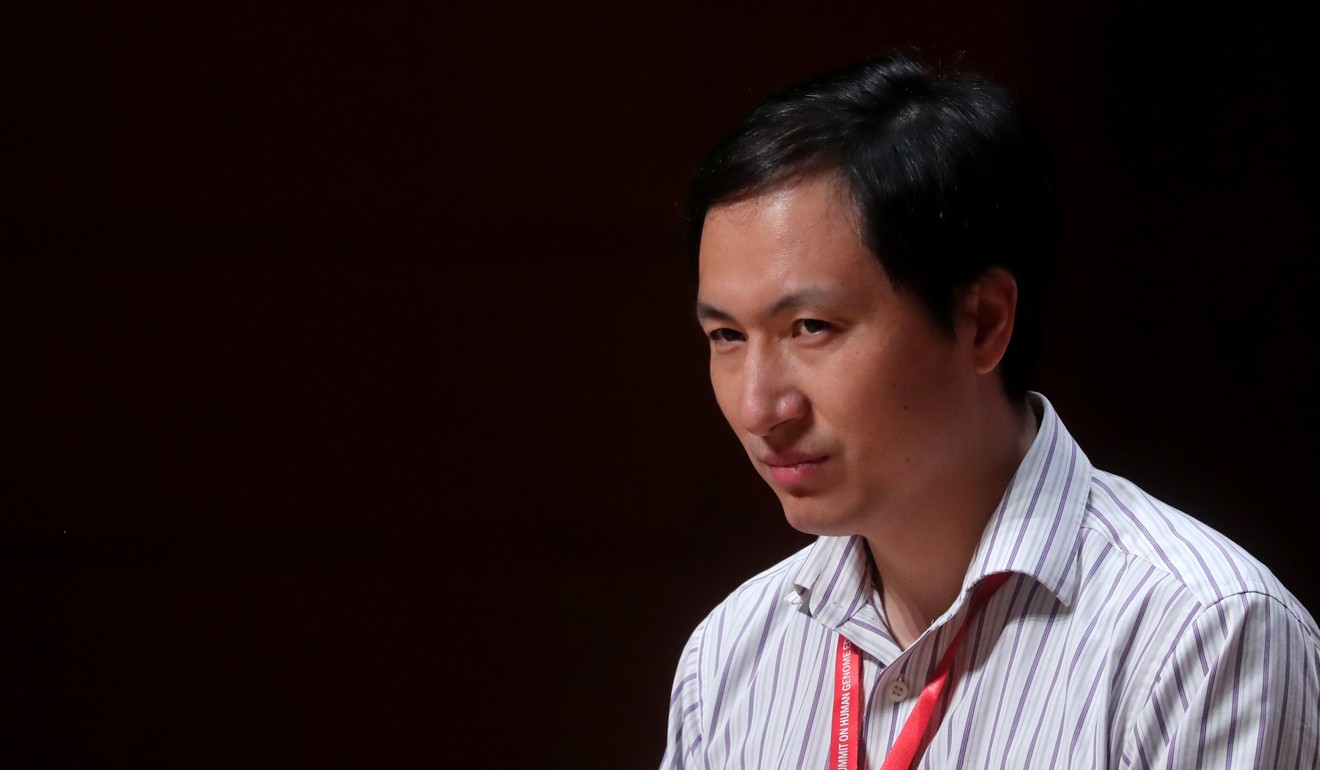
A year since China’s gene-edited baby scandal, here’s how the technology has advanced
- CRISPR, the technique used by Chinese researcher He Jiankui to alter the DNA of Chinese twin girls Lula and Nana, could introduce accidental mutations
- Nonetheless, the past year has seen the technology being advanced by scientists worldwide
Gene editing is intended as a more precise way to do gene therapy, and has been tried in adults to treat diseases without much controversy as the DNA changes do not pass to future generations.
But while experts generally believe that gene editing could benefit human society, they have called for stricter regulation and ethical scrutiny as the technology develops.
Gene editing for human reproduction is ‘irresponsible’, says UN panel
The Chinese biophysicist's manuscript made claims of a medical breakthrough that could “control the HIV epidemic”, but it was not clear whether it had even been successful in its intended purpose – immunising the babies against the virus – because the team did not in fact reproduce the gene mutation that confers this resistance.
A small percentage of people are born with immunity because of a mutation in a gene called CCR5. While the team targeted the right gene, they did not replicate the “Delta 32” variation required, instead creating novel edits whose effects are uncertain.
Most scientists think using it to alter the genes of embryos is too risky at the moment because of the danger of damaging other genes and because unknown DNA alterations could be passed on.
This technique, while efficient and customisable, has limitations too. It could introduce accidental or “off-target” mutations that can alter the function of a gene and may result in genomic instability. Ethically, it has the potential to create unfair social advantages by turning embryos into stronger, healthier and even more intelligent people.

Nonetheless, the past year has seen the technology being advanced by scientists worldwide.
“The potential of CRISPR will definitely be extended further, and the hope is really that it will have more benefits to human society,” said Alan Wong Siu-lun, an assistant professor at the School of Biomedical Sciences of the University of Hong Kong.
Doctors around the world have continued experimenting with using CRISPR to treat human diseases, achieving slow but sure progress.
Gene-editing scandal doctor’s methods work fine on monkeys: study
So far only one researcher, Russian molecular biologist Denis Rebrikov, has publicly revealed plans to produce gene-edited babies like He’s team.
Rebrikov announced his intentions to implant embryos edited with HIV resistance into women, by targeting CCR5 – the same gene the Chinese team worked on – just months after He’s experiment rocked the scientific world. The Russian scientist initially said he would conduct the experiment by the end of this year if he could get government approval, but by October decided to switch his focus from HIV resistance to treating deafness, according to a Nature article.
“With a new such study under consideration in Russia, appropriate regulation is urgently needed,” Jennifer Doudna, a UC Berkeley biochemist and co-inventor of CRISPR, wrote in the Science journal in November.
Gene-editing breakthrough comes with urgent call for global rules
Scientists around the globe have been trying to “build a viable path toward transparency and responsible use of CRISPR technology”, according to Doudna. The regulations that arise in this area should be “thoughtfully” crafted “without stifling” the technology, she wrote.
The scandal surrounding He threw Beijing's oversight of medical ethics into stark relief. Although China banned genetically modifying human embryos for reproductive purposes in a 2003 guideline, no penalties were stipulated. In the past year though, the National Health Commission drafted a rule that all “high risk” biotechnology, including gene-editing, would need cabinet approval and that those in breach would face warnings, fines, lifetime bans from research and even criminal charges.
China’s race to test ‘mutation-free’ gene-editing tech on patients
In July, the top reform committee of the ruling Communist Party approved a proposal to establish an ethics commission for science and technology, although details have not been released.
“The Chinese government has reacted quickly by drafting guidelines on genetics studies,” said James Cai, an associate professor who researches human genetics and data science at the Texas A&M University.
However, Cai expressed concern about the practical execution of the rules or guidelines, as well as the running of the national ethics commission: “Chinese people and government are notoriously known to not follow written rules at all levels mindlessly.”
As for the case that set off the controversy, a document purportedly approving the ethical aspects of He’s experiment, featuring seven signatures and a Shenzhen hospital stamp, was circulated online after the scandal broke. But the official probe stated that this document was fabricated, and some of the doctors who supposedly signed off on the approval said they did not recall doing so.
The big mystery at the centre of China’s gene-edited baby scandal
An official investigation in late January preliminarily concluded that He acted alone out of a desire for fame and would be punished for any violations of law.
The Chinese researcher was last seen in late December in Shenzhen, on the balcony of a flat in his university under guard by a dozen unidentified men, according to the New York Times. Weeks later, his employer, the Southern University of Science and Technology, fired him.
For more insights into China tech, sign up for our tech newsletters, subscribe to our award-winning Inside China Tech podcast, and download the comprehensive 2019 China Internet Report. Also roam China Tech City, an award-winning interactive digital map at our sister site Abacus.

